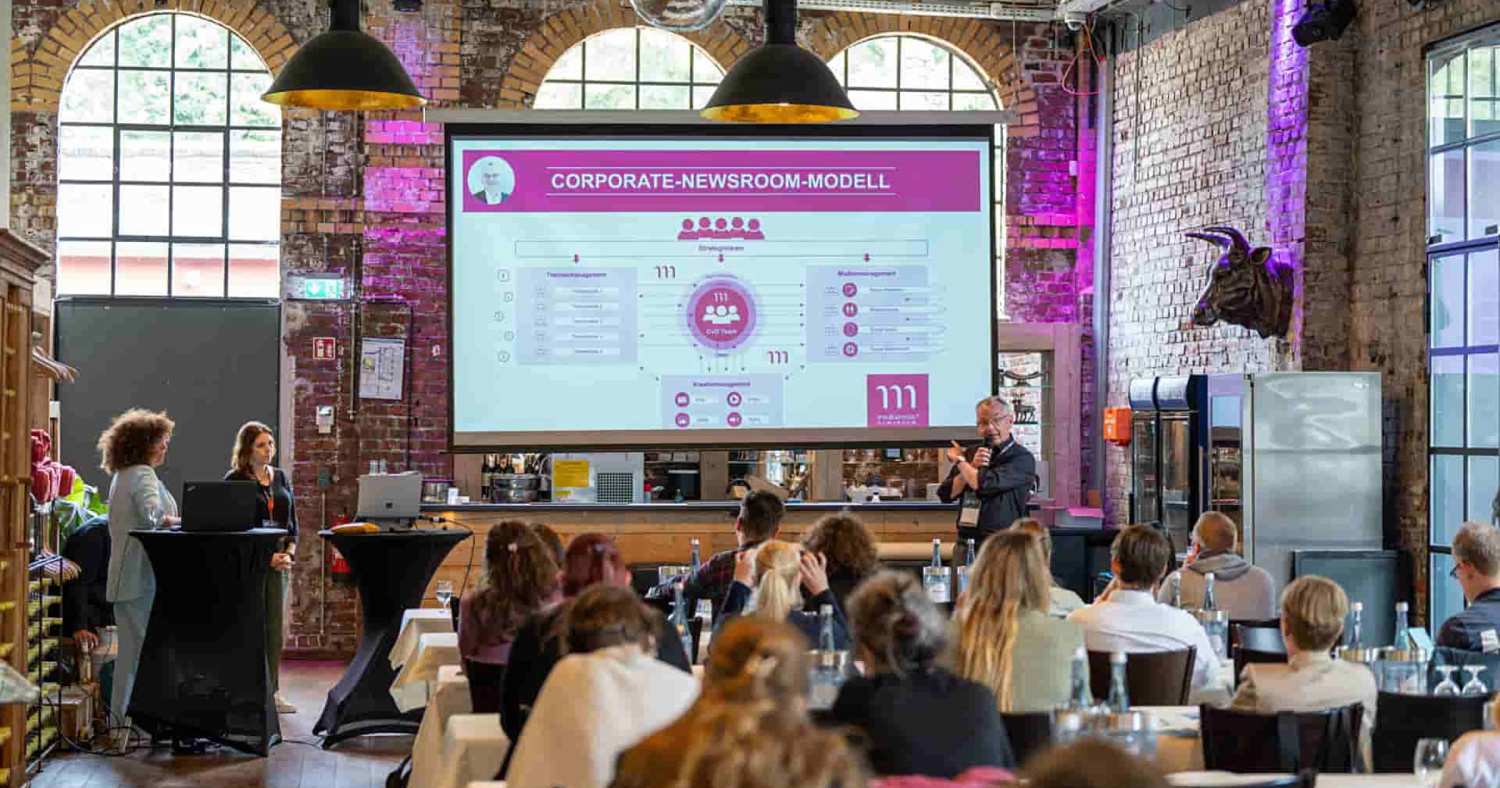In many companies, they are still separated in terms of space, organization and strategy: marketing and corporate communications. But on closer inspection, both struggle with similar problems.
Is communication becoming increasingly fragmented - and isolated?
Topics are becoming more complex, channels are flooded and increasingly fragmented, the pressure on resources is growing - especially with regard to budgets and personnel costs - and at the same time the expectations for efficient use of AI, measurability and the impact of one's own work are increasing.
Despite this, the exchange often remains superficial - or does not take place at all. The result: inconsistent messages on the various channels, duplicate content production, non-transparent capacity planning and wasted potential to communicate a uniform corporate image both internally and externally. There is often a lack of a common strategy, mutual understanding of the work and a central platform on which corporate communications and marketing communications can manage their content.
Communicating across the board doesn't mean leveling out differences - it means consciously knowing about each other."
Alexander Wolf, Senior Customer Manager at Scompler
Marketing: Analytical, structured and performance-driven
Marketing departments have mastered the art of reach. They know and understand channel-specific user behavior and work with clear KPIs. Campaigns are planned in an agile manner, set up in a structured way and aligned with specific target figures. In short: marketing must not only be able to reach many - and above all the right - people with its product positioning with a high degree of efficiency, but also generate measurable conversions.
Corporate communications: strategic, on-topic and credible
Corporate communications, on the other hand, focuses more on the depth of content, strategic topics and long-term nature of the messages. It knows and sets the central narratives, knows which topics position the company and which stakeholders need to be addressed with which information - be it the press, employees or the affluent public. Her expertise lies in carefully building trust, reputation and attitude.
Holistic campaign planning with marketing and corporate communications
At CMCX, Alexander Wolf and Alina Lackerbauer showed in a fictitious editorial conference what marketing and corporate communications each bring to the table - and why transparent processes, clear strategic goals and the strengths of both disciplines are needed for holistic campaign and communication planning.

Different - and yet the strengths of both disciplines complement each other
While marketing often thinks in terms of events or campaigns, corporate communication pursues a value-based, long-term course. Where one delivers reach, the other delivers relevance. Where one team focuses on structured campaigns and performance, the other focuses on topics and storytelling.
However, both disciplines develop their full potential when combined:
🔹 Marketing knows channels and their performance and delivers reach and structure.
🔹 Corporate communications knows topics and target groups and delivers relevance and reputation.
Both together create effectiveness. Only when messages not only reach many people, but also address the right people with the right content, can a lasting effect be achieved.
Why marketing and communication get in each other's way on social media
If there is one channel that sums up the connection between marketing and communication, then it is social media. Nowhere else are the boundaries between product advertising, corporate attitude and employer brand as blurred as here. Often controlled by other teams - but with the same messages, images and target groups.

Marketing primarily uses social media as a high-performance channel for paid ads on LinkedIn, Meta or TikTok or the latest product features. The content is usually driven by numbers - after all, reach, click rates and conversions are what counts in the end.
At the same time, corporate communications uses the same platforms to position CEO statements, distribute press releases to a larger target group and establish the C-level as a thought leader in the industry. This is also about classic social media KPIs - but much more about reputation and impact.
There is also a third player: HR. Social media has long been the most important channel for employer branding and recruitment campaigns, insights into corporate culture and communication about diversity, sustainability and new work.
This makes transparent planning, timely coordination and focus, as well as uniform messages - all collected in one central location - all the more important, especially in medium-sized and large companies.
Steps towards more collaboration between marketing and corporate communications
Define common goals, get the strategy out of the drawer - and into every asset!
Aligning communication and marketing objectives with the broader business objectives: what do we want to achieve in each case and together? Which KPIs apply to both disciplines?
Recognize and use content synergies!
Enable transparent planning (preferably on a shared platform!): No duplicate content, no eternal searching for contributions and responsible persons and no waste of resources
Consistent messages internally and externally
Prioritize topics instead of channels: Communication should always start with common strategic themes - then both disciplines can use their strengths with their channels and their target groups. In this way, we avoid contradictory narratives.
Team feeling!
Collaboration not only makes communication more successful - it also makes it more human. Promotes exchange, organizes joint conferences and shares best practices.
Thinking communication together - or losing impact
In a world in which the recipient does not differentiate between departments, the organization of communication must also become more targeted, integrative and coordinated. Marketing and corporate communications must see themselves as partners - not as competitors.






